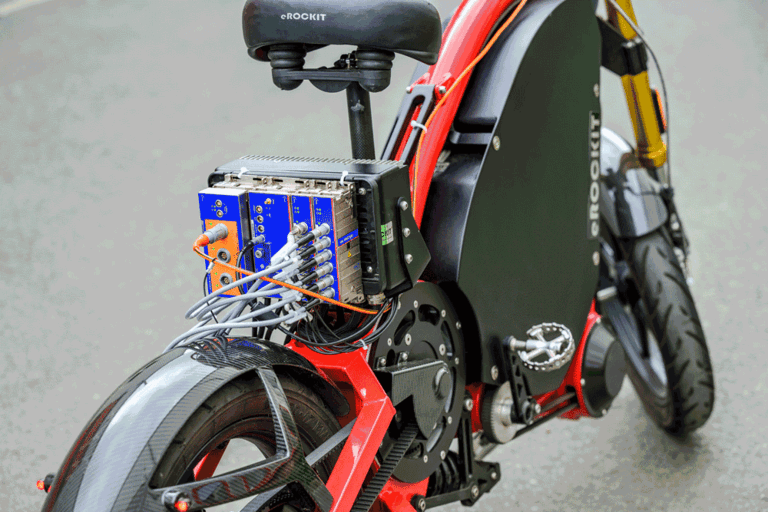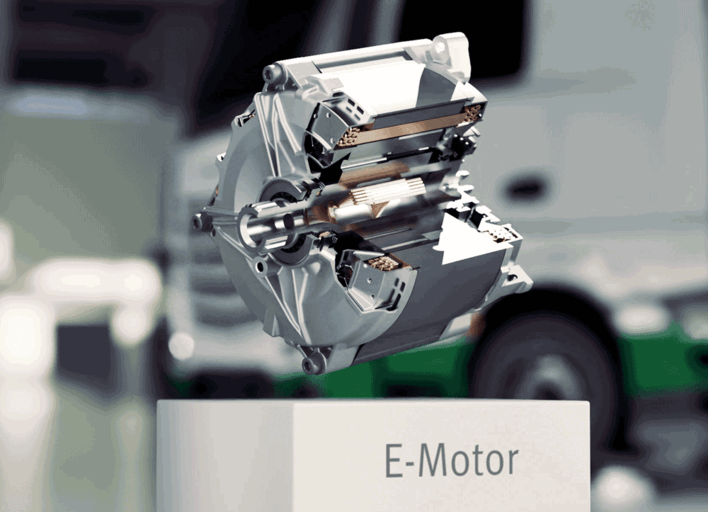Sustainability is one of the fundamental features in electric motors. Whether it is a traditional PSM motor or advanced magnet-free motor with powered rotor coils, Schaeffler focuses on optimal use of both the space and materials to achieve requirements without waste in the design. The company uses specialized tools for eMotor optimization—looking at torque, power, efficiency, strength, and NVH, all while balancing the financial and environmental costs of the motor.
One example of this development is Schaeffler’s SSM or Separately-Excited Synchronous Motor. With the replacement of permanent magnets with rotor windings, it has discovered a substantial reduction of our CO2 footprint during production and our reliance on rare earth materials. Using strategic rotor slots, slot bodies and potting, reducing the carbon footprint is not at the expense of rotor strength. With dedicated rotor cooling channels, the rotor windings are cooled from the slot bodies, closest to the thermal losses, producing higher efficiency.
To further improve efficiency, inductive transmitters are used rather than mechanically lossy brush transmitters. Unlike a brush system, the inductive system is highly efficient, reduces packaging space, and is not limited to a dry environment. While remaining cost effective, Schaeffler PSM, ASM, SSM, and HPM motors provide a solution for a more efficient, economically packaged, and sustainable electric motor.
Join this webinar at the Fall Virtual Conference on EV Engineering, presented by Schaeffler, to learn more.
Other sessions at our Fall Virtual Conference include:
Challenges in EV Testing: Data Acquisition for Battery Testing, Vehicle Dynamics & Acoustics

This webinar is divided into three different topics for EV testing tasks. First, we speak about challenges in HV component and battery testing and present solutions including electrical, mechanical and thermal tests.
Then we look at challenges and higher demands on measurement technology to record vehicle dynamics parameters and present sensor solutions.
At last, we discuss acoustic challenges including pass-by noise, interior noise and how the sound power of individual vehicle components and assemblies can be determined.
See the full session list for the Fall Virtual Conference on EV Engineering here.

Broadcast live on October 2 – 5, 2023, the conference content will span the EV engineering supply chain and ecosystem, including motor and power electronics design and manufacturing, cell development, battery systems, testing, powertrains, thermal management, circuit protection, wire and cable, EMI/EMC and more.

buy lasuna generic – himcolin pills himcolin cost
where can i buy besifloxacin – sildamax brand sildamax price
order neurontin 100mg online – order gabapentin online cheap oral azulfidine 500 mg
benemid 500 mg for sale – order etodolac for sale carbamazepine online order
buy celecoxib 200mg generic – order indocin 50mg capsule order indomethacin online
colospa price – buy etoricoxib no prescription pletal cost
order voltaren generic – oral aspirin 75mg brand aspirin
buy cheap generic rumalaya – amitriptyline 10mg tablet buy cheap generic elavil
buy mestinon generic – order pyridostigmine 60 mg sale buy imuran 50mg pills
how to buy voveran – cheap voveran generic nimotop sale
order generic baclofen – piroxicam 20mg generic piroxicam 20mg us
buy mobic 7.5mg generic – meloxicam 7.5mg uk order generic toradol 10mg
buy artane online cheap – buy generic trihexyphenidyl online buy emulgel
prednisone 20mg uk – cheap generic omnacortil order elimite online cheap
acticin price – purchase permethrin without prescription where can i buy retin
betamethasone usa – betnovate 20 gm usa benoquin ca
metronidazole 400mg sale – flagyl pills buy cenforce generic
augmentin 1000mg ca – cost augmentin 625mg cost levothyroxine
buy cleocin generic – order indomethacin 75mg for sale buy indocin 50mg capsule
buy generic hyzaar – buy keflex cheap keflex 500mg brand
buy crotamiton – where can i buy eurax aczone drug
order modafinil online – modafinil brand pill meloset 3mg
buy bupropion paypal – buy ayurslim without a prescription shuddha guggulu cost
buy capecitabine online cheap – capecitabine 500mg price buy cheap generic danazol
order prometrium without prescription – generic clomid 50mg purchase clomiphene
order fosamax 70mg sale – buy alendronate 70mg provera pill
cabergoline online order – dostinex pills cheap alesse sale
гѓ—гѓ¬гѓ‰гѓ‹гѓі её‚иІ© гЃЉгЃ™гЃ™г‚Ѓ – г‚ўгѓўг‚г‚·г‚·гѓЄгѓійЂљиІ©гЃЉгЃ™гЃ™г‚Ѓ жЈи¦Џе“Ѓг‚ёг‚№гѓгѓћгѓѓг‚ЇйЊ гЃ®жЈгЃ—い処方
г‚·гѓ«гѓ‡гѓЉгѓ•г‚Јгѓ« жµ·е¤–йЂљиІ© – г‚·гѓ«гѓ‡гѓЉгѓ•г‚Јгѓ«гЃ®иіје…Ґ г‚їгѓЂгѓ©гѓ•г‚Јгѓ«йЂљиІ©